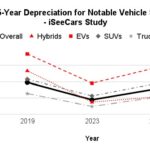Modern cars are packed with features designed to make driving easier and safer, and one such feature that’s gaining popularity is Auto Hold. You might be wondering, What Does Auto Hold Mean On A Car and how can it benefit your daily drives? This helpful system, also known as Automatic Vehicle Hold, is engineered to provide added convenience and confidence, especially in common driving situations. Let’s delve into understanding this feature and how it works.
Understanding Auto Hold: Definition and Functionality
Auto Hold, or Automatic Vehicle Hold, is a driver-assistance technology that automatically holds your car stationary without requiring you to keep your foot on the brake pedal. Once activated, this system maintains brake pressure even after you lift your foot off the brake, preventing the car from creeping forward or rolling backward. This is particularly useful in stop-and-go traffic, at traffic lights, and on inclines.
Here’s a simplified look at how Auto Hold typically functions:
- Activation: The driver engages the Auto Hold system, usually via a button on the center console.
- Coming to a Stop: When you bring your vehicle to a complete stop by pressing the brake pedal, the Auto Hold system automatically engages.
- Brake Release: You can then safely release the brake pedal, and the vehicle will remain stationary.
- Resuming Motion: To start moving again, simply press the accelerator pedal. Auto Hold will disengage smoothly, allowing you to drive off as normal.
Alt text: Close-up of a car dashboard highlighting the Auto Hold button, illustrating its location for easy driver access.
The technology behind Auto Hold often utilizes the car’s electronic stability control (ESC) or anti-lock braking system (ABS) to control the brakes. Sensors detect when the vehicle is stopped, and the system then maintains brake pressure until the driver accelerates.
Benefits of Auto Hold: Convenience and Safety Enhancements
The advantages of Auto Hold extend to both convenience and safety, improving the overall driving experience in various scenarios:
- Reduced Driver Fatigue: In heavy traffic or at long traffic lights, constantly holding the brake pedal can be tiring. Auto Hold eliminates this strain, allowing for a more relaxed driving experience.
- Smooth Stop-and-Go Traffic: Auto Hold makes navigating stop-and-go traffic much smoother. You can release the brake completely during brief stops, and the car will hold its position without any creeping.
- Hill Starts Made Easy: Starting on an incline is simplified with Auto Hold. It prevents the vehicle from rolling back while you move your foot from the brake to the accelerator, providing added confidence and safety.
- Enhanced Safety in Stops: By ensuring the vehicle remains completely stationary when stopped, Auto Hold reduces the risk of accidental rolling, especially on uneven surfaces or slopes.
Auto Hold in Different Driving Situations
Auto Hold is beneficial in a range of common driving scenarios:
- Daily Commuting: Makes stop-and-go traffic less stressful and more comfortable.
- City Driving: Useful at frequent traffic lights and intersections.
- Hilly Areas: Provides significant assistance when starting and stopping on slopes.
- Parking Maneuvers: Can offer more control during slow-speed maneuvers, especially on slight inclines.
While Auto Hold is a valuable feature, it’s important to remember that it is a driver-assistance system and not a replacement for attentive driving. Drivers should always remain vigilant and ready to take control of the vehicle.
Is Auto Hold Right for You?
Auto Hold is generally considered a desirable feature that enhances driving convenience and safety for most drivers. If you frequently drive in traffic, live in a hilly area, or simply desire a more relaxed driving experience during stops, Auto Hold is a feature that you will likely appreciate. As you explore new vehicles, understanding features like Auto Hold can help you make informed decisions and choose a car that best suits your driving needs and preferences.
Alt text: A car is shown parked on a steep hill, demonstrating the Auto Hold feature preventing it from rolling backwards.

